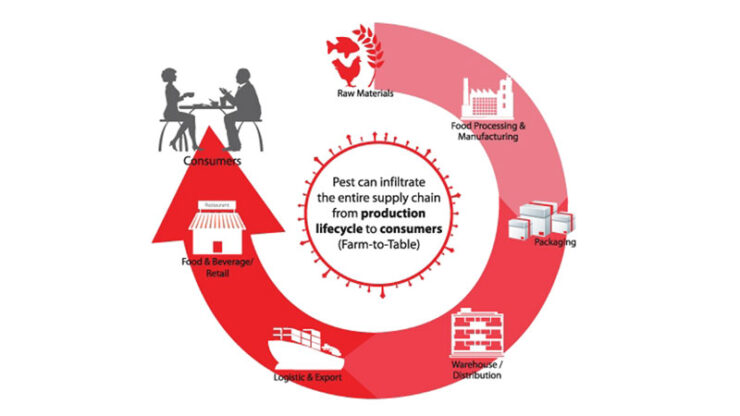Food distribution is a dynamic and highly competitive industry, with players facing various challenges ranging from fluctuating demand to supply chain disruptions.
In such a rapidly changing landscape, food distributors must stay ahead of the curve by adopting effective strategies to help them succeed. Whether you’re a startup or an established player in the market, knowing the five key strategies that can give you a competitive edge is vital.
This article will explore these strategies in detail and provide the insights you need to thrive in the food distribution industry. So, buckle up and get ready to discover the secrets to success in this exciting and dynamic sector!
1. Partnering with Reputable Foodservice Distributors
Partnering with reputable food service distributors is an essential strategy that every food distributor must know to succeed. Here’s how:
- Collaborating with a reputable food service distributor can reduce costs, streamline your supply chain, and enhance your overall business performance.
- Choosing the right food service distributor is critical, as it can significantly impact your bottom line.
- A reliable distributor should have a solid reputation, a wide selection of products, and a robust supply chain network.
- Partnering with reputable food service distributors can also help you stay ahead of the competition by giving you access to unique and innovative products that can differentiate your business in the marketplace.
- Additionally, these distributors can provide valuable market insights and industry trends that inform your strategic decision-making.
- Furthermore, working with reputable food service distributors can help you navigate complex regulatory requirements and food safety standards. It will ensure that you maintain compliance and provide safe, high-quality products to your customers.
2. Stay Ahead of the Curve with Cutting-Edge Supply Chain Management Techniques

Source: dailynews.lk
By leveraging the latest technologies and innovative practices, you can optimize your operations, reduce costs, and enhance your overall business performance. Advanced technologies like automation, artificial intelligence, and machine learning can help you streamline your processes and reduce human error. This, in turn, can save you time and money, increase productivity, and improve customer satisfaction.
Another advantage of adopting cutting-edge supply chain management techniques is better visibility and transparency. With real-time data and analytics, you can monitor inventory levels, track shipments, and identify potential bottlenecks or disruptions. This can help you make more informed decisions, mitigate risks, and respond quickly to changing market conditions.
3. Forge Strong Relationships with Suppliers and Customers
By developing rapport and mutual trust, you can create a network of support that can help you navigate the ups and downs of the industry.
One of the critical ways to forge strong relationships with suppliers and customers is by finding reliable partners who share your values and vision. You can work together toward mutual success and growth by selecting partners who align with your business goals.
In addition, communication is vital to maintaining strong relationships with suppliers and customers. Regularly checking in with them, responding promptly to inquiries and feedback, and actively seeking their input can help you build trust and demonstrate your commitment to their satisfaction.
Another way to build strong relationships is by offering incentives and benefits, such as volume discounts, loyalty rewards, and personalized services. By going the extra mile to meet their needs and exceed their expectations, you can foster a sense of loyalty and encourage repeat business.
4. Use of Market Data for Food Distributors

Source: linkedin.com
In today’s competitive food distribution industry, Market data for food distributors is critical for success. By leveraging market data, food distributors can gain valuable insights into consumer preferences, industry trends, and competitive dynamics. One of the key benefits of using market data is the ability to identify opportunities.
By analyzing consumer behavior and preferences data, food distributors can stay ahead of the curve and position themselves to capitalize on new opportunities in the market. Market data can also help food distributors to make more informed decisions about pricing, inventory management, and supply chain optimization.
Distributors can make strategic decisions that maximize profitability and efficiency by understanding market dynamics and competitive pressures.
5. Selecting Food Distribution Solutions that Best Meet Your Business Needs
With so many options available, it can take time to determine which solution best meets your business needs.
The first step in selecting the right food distribution solution is to evaluate your business needs and goals. This means identifying your target market, understanding your unique value proposition, and considering your budget and resources.
Once you clearly understand your business needs, you can begin to explore different food distribution solutions. Some options include direct-to-consumer delivery, wholesale distribution, and e-commerce platforms.
6. Adaption to The Changing Industry Trends

Source: sage.com
The food distribution industry needs to adhere to the changing trends constantly. Some of the crucial trends that food distributors need to be aware of include:
The rise of online grocery shopping: More and more consumers don’t want to move physically and do the shopping. Yes, consumers are buying online. This means that businesses should work on maintaining well-designed websites and offer convenient delivery options.
- The growing demand for healthy food ─ organic, gluten-free foods is rising. People are opting for more vegan options. Hence, the distributors need to include comprehensive options.
- Increasing popularity of convenient and sustainable foods ─ Consumers don’t want to waste time and energy in making food. Above all, they want environmental options. So, the distributors need to offer a variety of convenience foods made with sustainable practices.
Distributors should go global and invest in technology to improve efficiency and play with the trends. They also need to offer a wide variety of products in order to appeal to a broader range of customers. By this, they can build customer loyalty and can enhance their reputation and position as an industry leader.
Final Takeaway
In conclusion, the food distribution industry is dynamic and constantly evolving. Food distributors must be strategic, forward-thinking, and adaptable to achieve success. With a combination of hard work, innovation, and a commitment to excellence, food distributors can thrive and build long-lasting, profitable businesses that serve the needs of their customers and communities.




